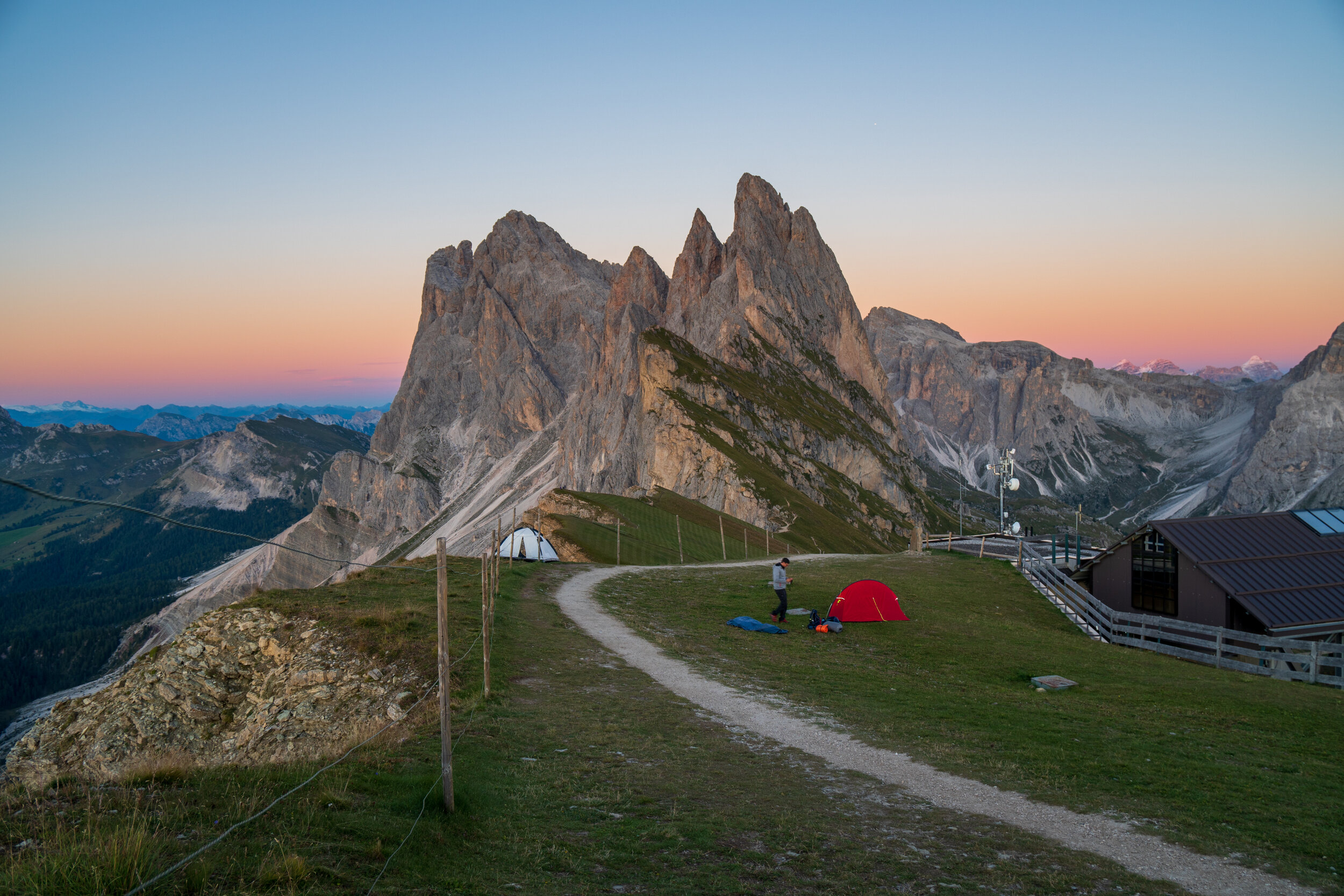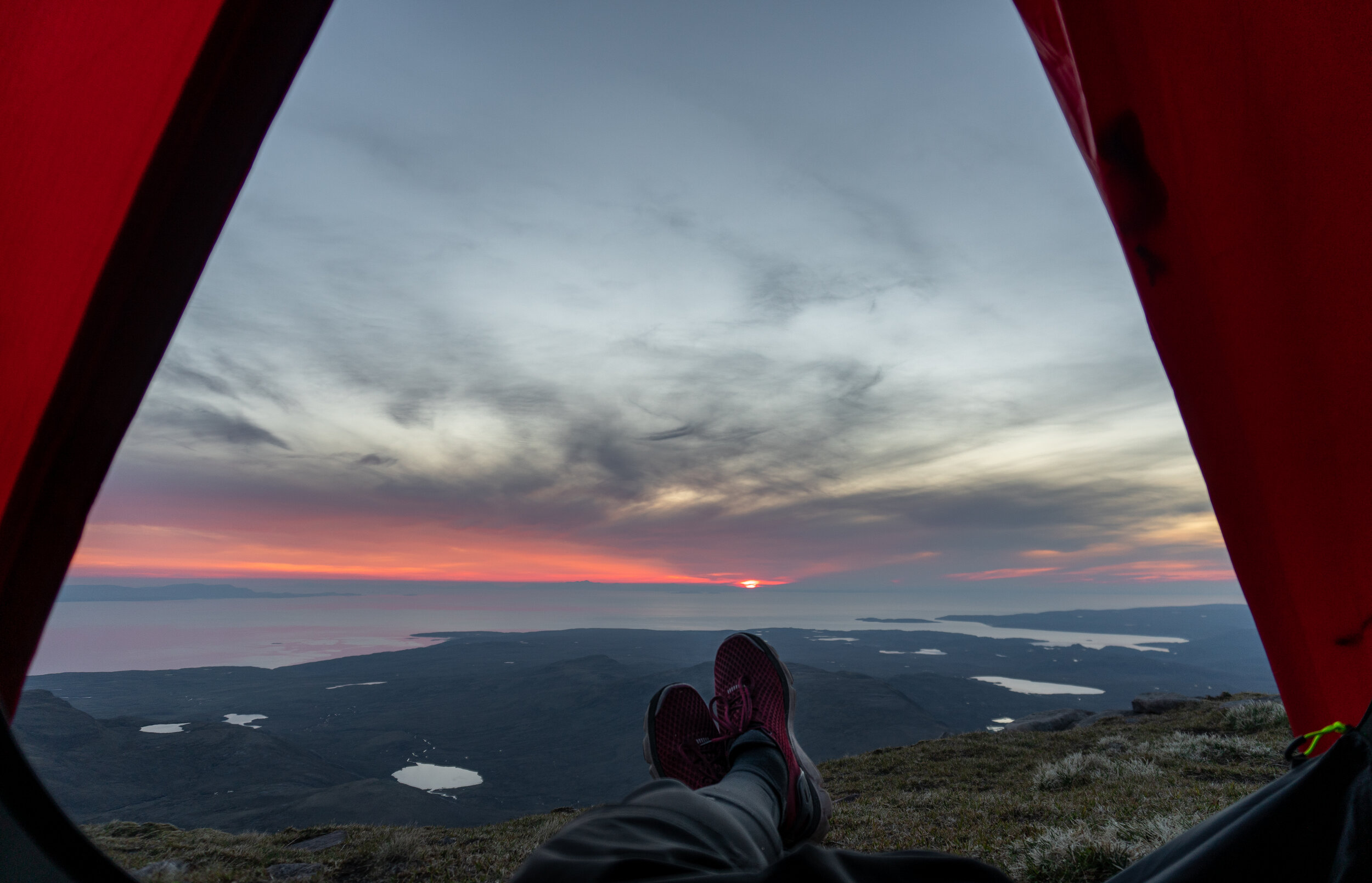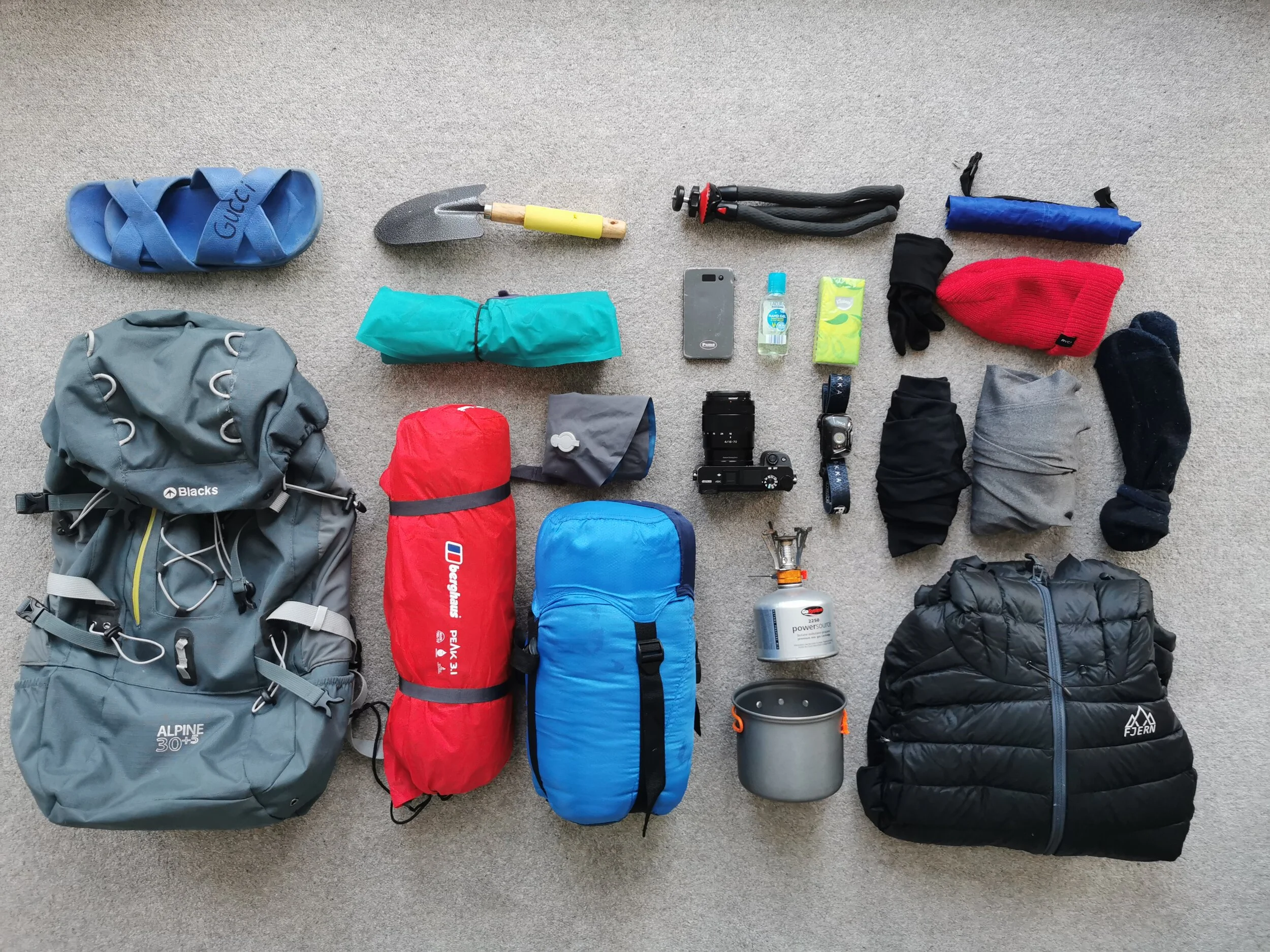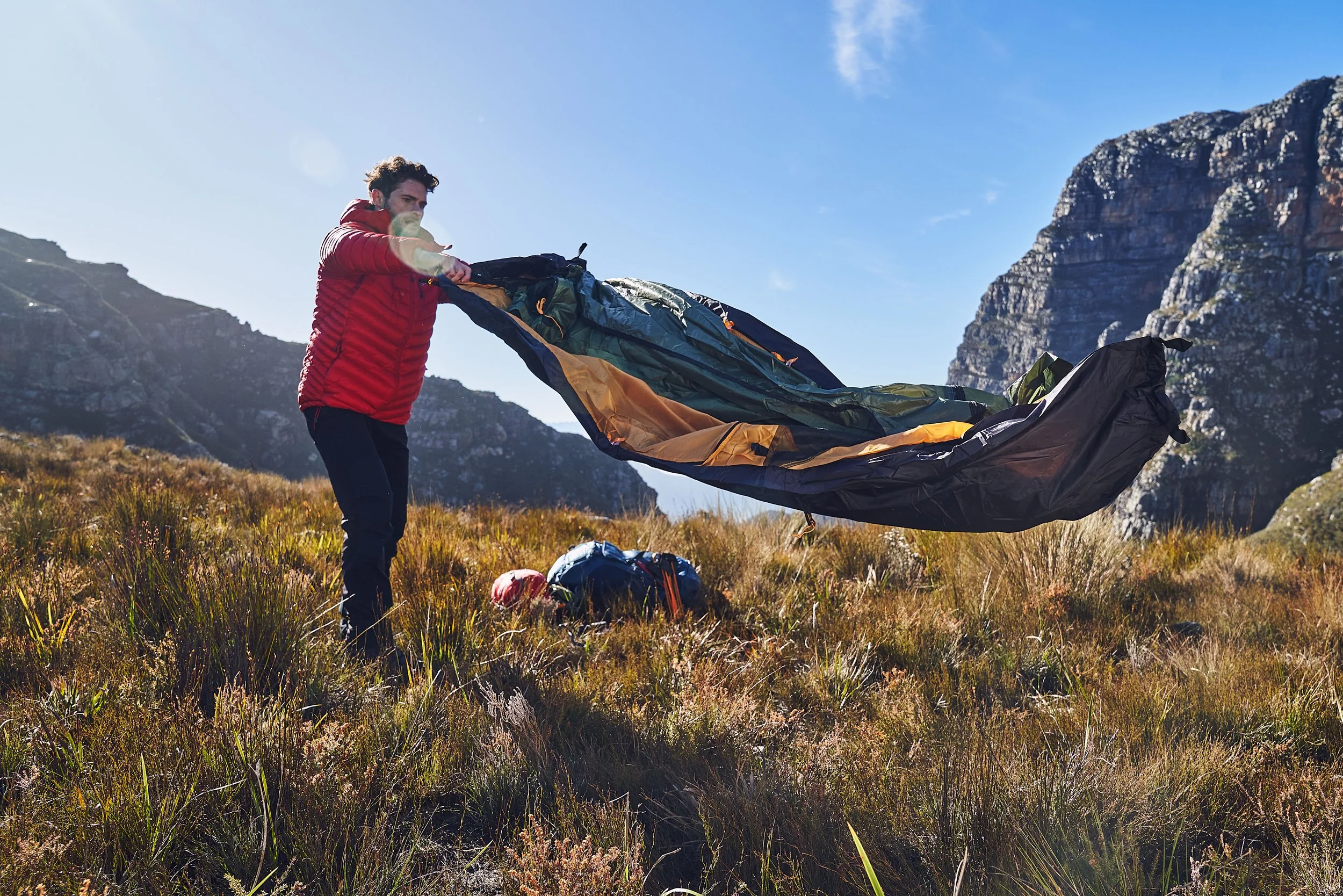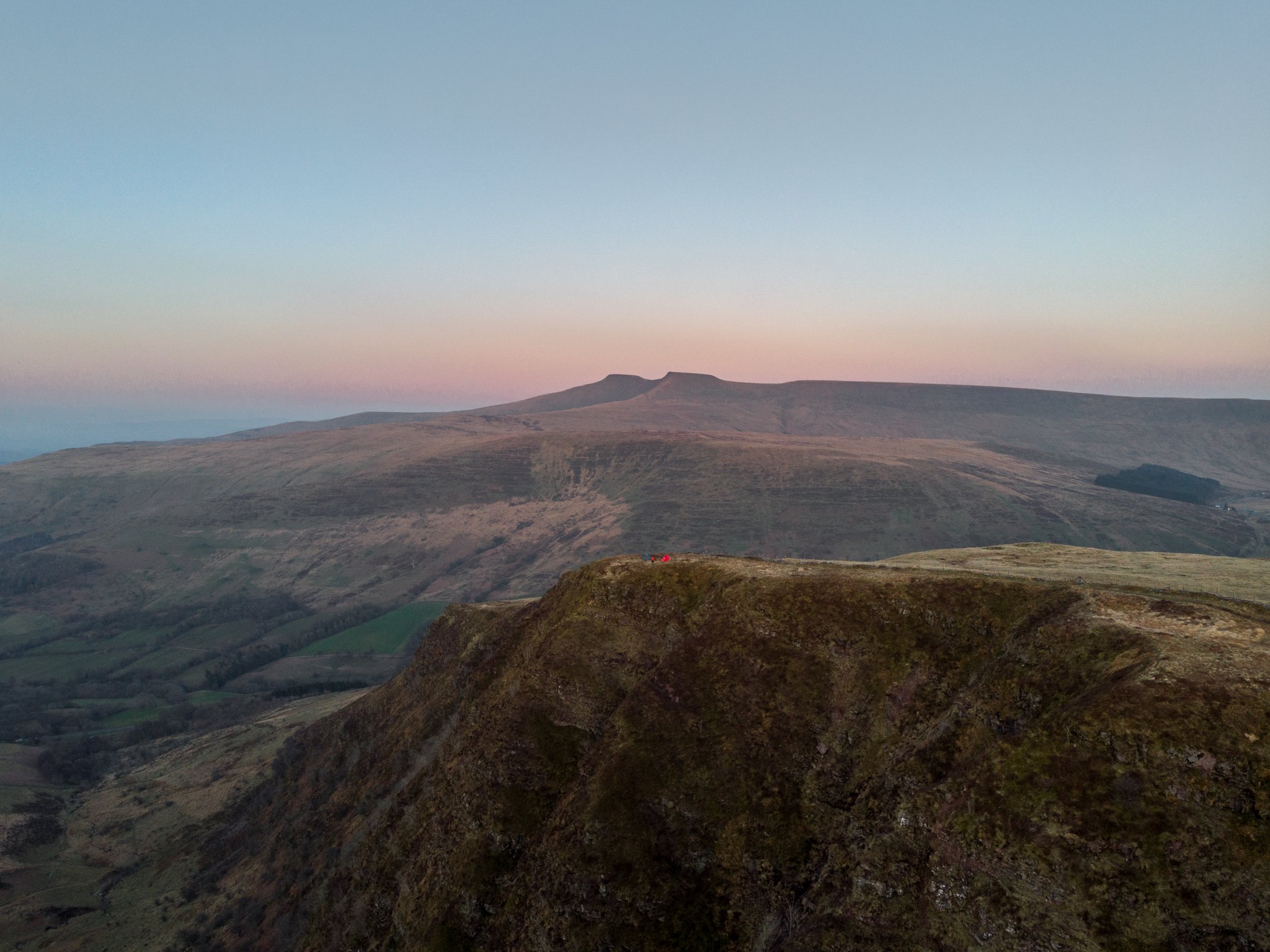What is Wild Camping? | A beginners guide with kit list Included
So you have recently discovered the term ‘wild camping’ and are completely bemused by what it is, how you do it, and what you actually need to wild camp?
I was once in the same position as yourselves, a virgin in the realms of wild camping, daunted at the prospect of pitching up in the middle of nowhere and potentially being caught by an angry farmer with a pitchfork.
In order to to help you understand what wild camping is, what equipment you need and how you do it safely I have decided to write a beginners guide to wild camping blog post,
While I don’t exactly believe I am a wild camping expert (more of a poor mans Ray Mears) I have undertaken a significant number of wild camps in both in the UK and abroad, including spending 15 straight days bike-packing (cycling and camping) around the Welsh Coastal path to raise money for charity.
Hopefully, this blog answers all the questions you may have and after you realise wild camping is much easier than you think it will hopefully inspire you to get out there and try it yourselves.
WHAT IS WILDCAMPING?
To put it as simply as possible, It is camping in the great outdoors away from designated campsites and caravan parks. You can do it for one night or for weeks at a time and can pitch up in whatever part of the wild you see fit.
WHY WOULD YOU WANT TO WILDCAMP?
To enjoy all the benefits which come with camping, without the downside of having unwanted people around.
No campsites, no people, and hopefully no problems.
Spending time surrounded by nature has been proven to provide huge mental and physical benefits. For many including myself, I head to the mountains and coast to escape the stress and anxiety that can come with modern-day life and technology.
Wild camping not only increases and extends that feeling you get from being in the great outdoors, but its carefree and simplistic nature gives you a sense of freedom and almost primitiveness that normal camping simply doesn’t provide.
It is also a cheap and cheerful way to complete multi-day hikes and reach usually inaccessible places.
Finally, you can go to sleep and wake up in some of the most epic locations you can ever imagine. In the process you’ll hopefully get witness some of the most incredible sunsets, sunrises and if you’re lucky, star-filled nights of your life.
A wild camp on the Seceda ridge line 2,500m up in the Italian Dolomites.
IS WILD CAMPING LEGAL?
That depends on where in the UK you are actually wild camping. In Scotland, it is perfectly legal thanks to the Land reform act of 2003. The same can be said of Dartmoor National Park in Southern England, where wild camping falls under the National Parks & Access to the Countryside Act 1949.
In the rest of the UK, it is not legal unless you ask the landowners permission before doing so.
Although technically illegal, it’s widely tolerated especially with the UK national parks. You will get away with wild camping if you choose an isolated location, be discreet as possible and follow the unofficial rules of wild camping which I have highlighted below.
The way I see it is If you’re going out of your way to camp in the wilderness (such as up a mountain), you’re only going to meet other like-minded people and unless they are a complete tosser, then they aren’t going to have an issue with you doing it. There is also no such thing as the mountain police
Laws regarding wild camping in Europe vary, with some countries being far more tolerant than others. In Switzerland for example, it is very illegal and you might go to jail, whereas in Norway it’s completely legal.
IS WILD CAMPING SAFE?
Despite always having a feeling that I’m going to be murdered during the middle of the night, I am yet to come across any issues of safety while wild camping.
Provided you have chosen your location well, it’s unlikely that you will be disturbed by another human or any wild life.
The main issues with safety revolve around lack of knowledge, poor planning, alongside having the wrong equipment and clothing for the conditions you are planning to camp in.
Always check the weather forecast, test and check your equipment, take plenty of warm layers, and pack some waterproofs.
Finally, take a phone and tell someone where you are camping and when you’ll be back. We don’t want anyone going full ‘127 hours’ do we?
HOW DECIDE ON A Wild camp LOCATION?
The three things I consider when choosing a wild camp location are;
How easy is the spot to reach? (Does it involve navigating a risky/ difficult terrain ie rivers or ridges)
How far is the spot from civilisation? (Will it take one or several hours to reach)
How epic is the spot going to be? (What’s my sunset and sunrise view going to be like)
You can get inspiration and suggestions form social media and websites. However I will use Google’s satellite imagery alongside normal Ordnance Survey (OS) maps to help find a location.
Usually I will head up a mountain to camp, although this is harder to reach and its will be windier, it will usually provide the best views.
Once you’ve found a potential spot then visit the location during the day to scope it out, before returning later in the evening to wild camp.
Once you have found an area to camp, you then have to decide where to pitch your tent.
Try to pick a spot that’s flat, sheltered from the wind and that isn’t in a place which will collect water if it rains.
Oh and make sure your tent entrance is facing away from the direction that the wind is blowing in or it might turn into a kite.
To get accustomed to the process of wild camping, I would suggest undertaking your first wild camp in a location closer to home or one that you are very familiar with. (It could even be your back garden)
This will not only help with any nerves you may have but if something does go wrong you can easily reach your car or get back home with minimal fuss.
Failing that, you can do what I did and just throw yourself in the deep end. My first ever wild camp was beneath Steal waterfall in the Scottish highlands, then the following night I slept at 1,000m on top of a mountain in Torridon!
THE UNOFFICIAL RULES OF WILD CAMPING
Leave No Trace The most important rule of wild camping is that when you leave, no one should be able to tell that you have camped there. Take care not to damage the environment and whatever you bring with you must also leave with you. That means leaving no litter, any faulty equipment, and definitely not a pile of human excrement covered in wet wipes.
Pitch up late and clear out early - This is so you spend the least amount of time being a visual impairment. Do however arrive with plenty of daylight so you can scope out the best spot to pitch you tent. There’s nothing worse than arriving at location late and frantically trying to find a pitch and set up in the dark. I’ve done it, and it definitely takes the fun out of wild camping. After you have found the right spot take time to enjoy the view and wait until closer to sunset to pitch your tent. Get up for sunrise and take in the view before packing up and heading down before the first walkers hit the trails.
Out of sight out of mind - To be as discreet as possible and so others don’t stumble across you, look to camp away from any tracks and paths. Oh and if on the rare chance you do get asked to move along, do so apologetically and without a fuss.
Don’t be a fire starter - Not only does this draw attention to yourself, but it also presents a huge fire risk not only to the equipment you are sleeping in, but also the environment you are camping on. Most wild camping spots are located in beautiful landscapes which would only be damaged and destroyed by a pointless fire. If you’re cold then you should have packed more layers.
Be toilet trained - Never go to the toilet within 30m of a water source. If you unfortunately do need to go for a number two, make sure it’s buried at least 15cm deep (there’s a reason I’ve included a garden towel on the kit list) and don’t bury or leave the toilet paper nearby, take it home with you. remember to bin that toilet paper when you get home. Unexpectedly discovering it several weeks later doesn’t quite have the same thrill as finding a £10 note in your coat pocket.
WHAT EQUIPMENT DO YOU NEED to Wildcamp?
The secret to wild camping is trying to keep your equipment down to a bare minimum and finding the most efficient way of carrying it.
There is a basic kit list which you will need for wild camping which I have outlined below, however what type of kit you will need will depend on a few factors
Where in the world you are wild camping
What location and terrain you are wild camping on
The weather conditions and time of year you are wild camping in
What type of wild camping experience you want to have
Wild camping in winter on a mountain will differ signifantly to wild camping on the coast in the summer. You can also wild camp without a tent, which is another experience entirely.
You can spend hundreds or even thousands of pounds on your set up, however if you ware new to wild camping and/or are unsure if it is for you, I would recommend starting off on a budget and slowly investing in better equipment.
My initial wild camping set up cost less than £200 and although aspects of it were questionable, it didn’t stop me sleeping in some epic locations.
Never be put off by the fact that you don’t have the top of the range tent or you’ve read a blog post which states you need a ‘Pata-Gucci’ sleeping bag that’s been tested on the slopes of the Himalayas.
Just make sure you have the essential equipment, prior experience using it, and you aren’t doing anything that’s going to have mountain rescue called out to find you.
My first wild camping set up, much has changed since then
Wild camping Kit list
A shelter
This can come in a many forms, be that a tent, a tarp, or a bivvy bag. What shelter you choose depends on where you are camping, the weather, and how far you have to carry it.
Personally I would start with a tent which is lightweight and robust enough to endure the elements. If you are camping alone, a tent less than 2.5kg is a good starting point.
One man tents are the lightest, but this usually comes at the sacrifice of space as some can resemble a coffin (Great news if you’re Dracula, not so good if you’re over 6ft). If you do want a little more room for activities then consider getting a two-person tent.
When shopping for your first tent there will be a huge array of tents across a wide spectrum of prices, shapes, styles and prices. However you don’t have to splash out hundreds of pounds to find a high-quality tent.
I stated with a £70 Berghaus one-person tent. More recently I have upgraded to a Naturehike Mongar, which is a two skin, two person tent which I got from Amazon.
I like using the 2 person tent as it provides extra space. The tent costs £130 and is an exact replica of the more expensive MSR Hubba Hubba which costs £500 (I dont know how they got away with this).
It’s super easy and quick to pitch, packs down small, is very spacious and has two big side doors. You cal also pitch it without the rain cover if desired.
So far the tent is yet to let me down. However the only slight downside is that it can be a little airy, so a good quality sleeping bag and mat will be needed if you are camping in the cold.
Sleeping bag or Quilt
Finding one that is suited to the seasons and weather conditions you are camping in is vital.
You can’t use a one season (summer) sleeping bag in winter (you will freeze) and using a four-season sleeping bag during summer would be pure torture.
One thing to check before buying a sleeping bag is the temperature rating of the bag.
Focus on the limit rating when buying a sleeping bag. This indicates the temperature at which the average adult male can expect to have a comfortable sleep.
Temperature rating also depends on the individual. I tend to be a warm sleeper so I can get get away with a higher limit rating as I can always wear extra clothes if I do get cold. In addition, you can also use a sleeping bag liner to add extra warmth.
Shape of the bag
This down to personal preference, but you can get straight, semi rectangular, mummy and even quilts. I
have never used a quilt wildcamping but some people swear by them. Personally I would recommend a mummy or semi rectangular sleeping bag as it offers the most warmth for its size and weight.
Synthetic vs Down
Ideally you will want the sleeping bag to be light and pack down as small as possible. What fill material you choose really depends on budget and you’ll pay more for a lighter, better quality sleeping bag.
Down Fill - Pack down smaller, are lighter, however cost significantly more
Synthetic Fill- Are cheaper, heavier, and do not compact down as small. They are also better at insulating when wet.
What sleeping bag do I use and recommend?
Again this will depend on where, what time of year, and the temperature you are camping in.
If you plan to wildcamp on mountains and can only afford one bag then I would recommend a a three-season bag
Over the years I have invested in different sleeping bags for different seasons (see below). However I started off with a £50 ‘Viking Trek’ sleeping bag I bought off Amazon. As cheap as it was, I survived an autumn night in the Dolomites at 2,500m and a spring wild camp in Scotland at 1,000m.
Deep Winter: Rab Ascent 900 - Down | -15°C Limit | 1.4kg | £350
Spring/Autumn bag: Rab Ascent 500 - Down | -5°C Limit | 1kg | £210
Summer bag: Kelty Cosmic 40F - Down| 4°C Limit | 860g | £126
Low level Summer bag: Highlander Trekker superlight - Synthetic | 8°C limit | 570g | £35
Sleeping Mat
I have seen some people describe this as luxury items but for me they’re integral for a half decent nights sleep.
Sleeping pads come in the form of inflatable mats and foam mats. They help keep your body heat from escaping into the ground alongside providing some much-needed comfort.
Which style you pick depends on preference and budget. You can also combine the two for extra warmth and comfort.
Inflatable sleeping pads pack down smaller and are easier to carry, however they can puncture, are nosier, and can be harder to settle on.
Focus on the the R Value
When choosing a sleeping mat, you’ll want to check its R value. This is a measure of how well it insulates you from the cold ground. Essentially, the higher the R value the better insulation, however a higher R value means a bulkier, heavier and more expensive mat:
Light mats with R values around 1-2 work great in warm weather,
Mid-range values (about 3-4) are ideal for three-season camping,
Values of 5 and above are best for really chilly nights.
Unlike sleeping bags, you can get away with a warmer sleeping mat in summer. So I would recommend aiming for a mat with a mid range R value as it will be comfier and you can use it in multiple seasons.
There are hundreds of brands to choose from and some will claim that you can inflate them in as few as 10 breaths, but unless you have an iron-lung don’t believe that bollocks.
Sea to summit, Thermarest, and Exped are all reputable brands. I own an Exped Downmat lite 5M which has been discontinued. I also have a Forclaz Folding Foam Mattress for winter.
Extra Layers
To quote the Arctic Monkeys, ‘they say it changes when the sun goes down’ and that’s certainly true-up in the mountains. Even during the summer months it can get cold at night especially if you are camping at a higher elevation.
If I am hiking in shorts and a base layer, I will also bring:
Lightweight down jacket - Decathlon Forclaz MT500 Down Jacket
Waterproof windbreaker
Mid layer Hoodie
Joggers
Thicker socks
Spare base layer and pants - Nice to change into
Gloves and a beanie
Backpack
Unless you’ve hired Sherpa, or have your own personal mule on hand then you’re going to need a backpack to carry all your equipment in.
Make sure you have a good quality hiking backpack with padded shoulder straps, alongside waist and chest clips to help disperse the weight.
With regards to size, somewhere between 35 and 60 litres will be sufficient depending on how long you are going wild camping for and how much equipment you have.
I use and recommend the Deuter Air contact Ultra 50+ 5. Its 1.3kg, built off a sprung steel frame and is both comfortable and functional.
Water
Carrying enough fluid to get you there and back, or having the means to refill your vessels is essential.
Water can be a heavy burden so knowing there is a clean water source nearby, or having a refillable/ purification device, such as a Life straw or Grayl Geopress, can shave a huge amount of weight off your pack.
Depending on the length of the wildcamp and my availability of water sources, I tend to take 1-3 litres.
I’ll also bolt a pint of water before I start the hike to make sure I’m hydrated before I set off. I also like to carry a can of cider to have at sunset.
Food & cooking equipment
With regards to food, this once again depends on the individual and the length of time you are planning on going wild camping for..
If i’m going for one night, sometimes I don’t take any cooking equipment to save weight, space, and hassle. Instead will eat a big meal before I depart then take lots of snacks and a wrap/sandwich. As I know I will be departing early in the morning I’ll just wait until I get back to my vehicle to have breakfast and enjoy some fasted morning cardio.
If you are someone who wants a hot meal and a morning brew, then you will need a lightweight cooking set up.
There is no right or wrong cooking set up and it all comes down to about how much space you have and what you are actually planning on cooking. Gas canisters will cost you around £4 and are available for most outdoor stores.
I started off with a a Vango cook set alongside a £10 burner stove
I tend to cook some form of packet ramen noodles which just require water, and if I’m feeling really boujey I will pre-cook some salmon or chicken and veg to throw in when its cooking.
I will eat out of the pot using a spork and bring a sponge or cloth to clean the pot down.
Electronics
Head Torch - A hands-free light which will allow you to navigate in the dark is always a winner in my eyes. I use and recommned thePETZL Swift RL Headlamp This provides 900 lumens of brightness, is only 100g and is rechargeable. The Everbeam H6 Pro is a great cheap option at £15.
Mobile phone & Portable Power bank - We all want to connect with nature but not go full Christopher McCandles (‘Into the Wild’). The phone is a way to contact people if something goes wrong, a form of navigation and a way to document your wild camp. Just make sure you have enough charge before setting off or bring a power bank just in case.
OTHER USEFUL ITEMS
Toiletries - All down to personal hygiene but I like to take a travel toothbrush and toothpaste as I’m not a straight-up savage. I also pack some loo roll and hand sanitiser in a plastic zip-lock back alongside a miniature garden trowel (I don’t like digging holes with my hands) in case my bowels decide to activate during the night.
Dry Sacks - Keep any gear and equipment dry if it rains, It can also double up as a pillow if you stuff it with clothes.
Map and compass- In case your phone runs out of battery or breaks.
Earplugs - Helps block out the noise of the tent rattling in any high winds.
Crocs or lightweight sliders. These are perfect to slip into after a long day of walking. They will also save you having to put your hiking boots back on if you need a wee in the middle of the night.
An alcoholic beverage- I will take a can or cider with me to enjoy during sunset
So there you have it, that’s my guide to wild camping, including my kit list. If you have any thoughts, questions or think I’ve missed anything essential from my kit list, feel free to take a pop at me in the comments section.
If you did find this blog helpful, I’d appreciate you giving me a follow on social media, every bit of support goes a long way.
If you want to support further then why not give something back and buy me a coffee?
I created and I run this website in order to help inform, amaze, inspire people (for free) to get outside and explore the adventurous side of the UK.
Although I do run some google ads, I have limited them in order to make your experience on this website far more enjoyable. Because of that, I don’t actually make much money of this website.
Any support would be hugely appreciated and it would also go a long way to helping me to continue to create free content and guides for yourself and other people to enjoy.
For more travel, hiking, & photography inspiration around Wales check out my in-depth guides to each of my favourite Welsh regions below.



